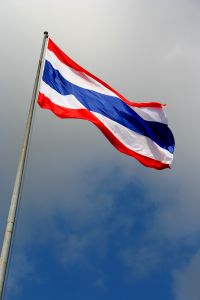Sports-minded tourists or travellers with lifestyles
revolving around physical fitness need not forego of their activities when
visiting the island of Koh Samui in southern Thailand. As a matter of fact, the
Koh Samui highlights
of their visit can include various sports and similar recreational activities.
The tourist accommodations at the island’s beach destinations offer many
choices in water-based sports and recreational activities. Among these are jet
skiing, kayaking, kite boarding, snorkelling, and scuba-diving.
Tourists with an active lifestyle will be delighted to
note that lists of Koh
Samui things to do also include many land-based recreational pursuits.
Some beach resorts, such as those at the southern tip of the island, feature
their own fully equipped fitness centres.
These facilities are at par with
Western standards. Resort visitors who have a training regimen to keep will
have at their disposal modern exercise equipment, such as electronic treadmill and
state-of-the-art workout machines, in addition to the traditional free weights.
Many Koh Samui resorts also maintain tennis courts
with lights for evening matches. Moreover, tourists who want to improve their
lobs and volleys can avail of tennis lessons designed specifically for adults
and kids. Those more inclined toward table tennis will likewise find the
facilities they need in some beach resort clubhouses.
Visiting duffers won’t be away from their woods and
irons either. Koh Samui is home to the Santiburi Samui Country Club located at
the mountainous northern part of the island. This 6,930-yard, 18-hole, par 72
layout promises championship calibre of play.
Its links are striking, taking
golfers across winding fairways traversing coconut groves and creeks amid
wondrous views of the Gulf of Thailand, cliffs, and mountains. The Santiburi
course offers challenging play with its up-and-down-hill configuration.
Mini golf too is an option for Koh Samui tourists yet
to earn their spurs in the full version of the royal and ancient game. A mini
golf course is located near the Santiburi Samui Country Club at the forests
overlooking the Choeng Mon beach resort. Called Mini Golf International and a
member of the World Mini-Golf Federation, this is the only professional mini
golf course in Thailand.
At Koh Samui, tourists can also have a sampling of
Thailand’s home-grown sport muay thai or Thai kickboxing. Besides this
Thai national sport, more traditional sporting activities are also widely
played in the island. Several football clubs and associations in Samui
regularly conduct tournaments and pick-up matches. More sedate games such as
petanque and badminton also have many adherents in the island.

.jpg)




